1. Ghostrunner
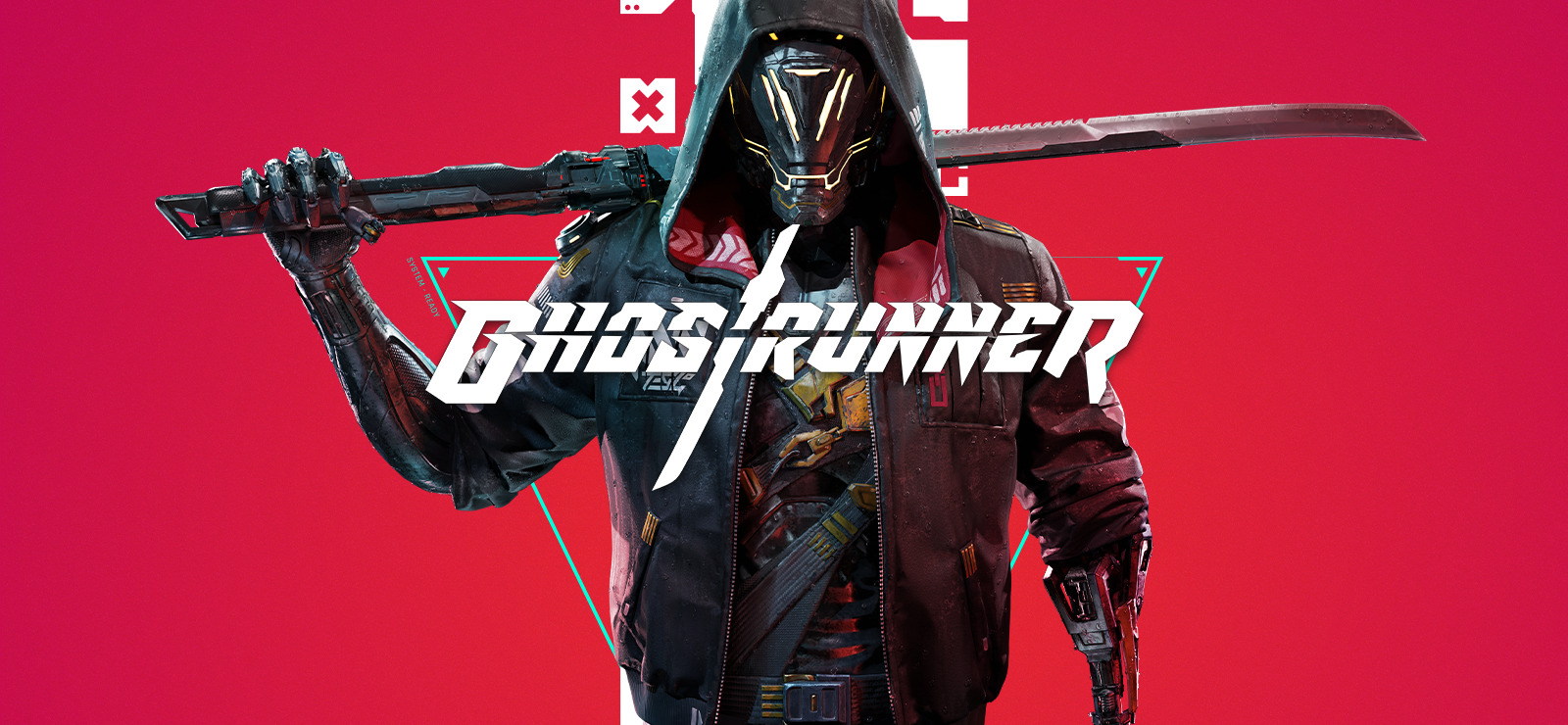
A game recommended me out of nowhere by a Facebook friend and it got the 2023 challenge off to the start that it needed. This is an incredibly unique, first person action game that's heavily focused on movement mechanics and precision platforming. The story and setting are somewhat cliche - the player controls a half human, half robot ninja cyborg who has been awaked with the task of saving what's left of a post apocalyptic human civilization. The game takes place entirely in one, incredibly tall tower that has the feel of bleak, dystopian cyberpunk future. The graphics and artwork, for what to my knowledge is a relatively indie game, is absolutely stunning and the attention to detail in the environment is reminicsent of really good Destiny 2 content. Wall running, zip lining and general parkour are here in spades and the fluidity of the movement feels so good even on the so called 'inferior' input device. I mention this because this game is supposed to played on mouse and keyboard, allegedly, but I stuck with my trusty sticks and after getting used to it there's no other input device I would have preferred. In terms of the actual combat mechanics, speed is king. Both the player and all non boss enemies are defeated in one hit, which means precise movement and careful route planning or key. This is the definition of a difficult but fair game. Although the sections can get extremely hectic and input crazy, the checkpoints are plentiful and forgiving. Although a player may rack up deaths upon deaths during a certain section, the next checkpoint is almost aways only a few seconds away. One of the key combat mechanics is the ability to slow time, avoid a bullet by strafing to a particular side, then dashing towards your opponent to slice him up. It's a video game you truly feel yourself getting better at, as the game slowly wheels about more combat mechanics in a progresive and logical manner. To my recollection there were three total boss fights, all uniquely fun in their own right combining high level grappling, wall running and parrying amonst other combat mechaincs. Overall, an unexpectedly awesome experience. There is a DLC which allows the character to play from the perspective of one of the aforementioned bosses which serves as a complete game, and it will undoubtedly be added to this challenge year sooner rather than later. 2023 is off to a helluva start.
Platform: PC
Difficulty: N/A
Rating: 9/10
2. Donkey Kong Country: Tropical Freeze

Two 9s in a row to start the year and I expect these kinds of number to be a recurring theme this year. After putting it off way too long, I finally played the long awaited successor to one of my favorite series of all time. DKC: Tropical Freeze doesn't necessarily reinvent the 2D platforming formula that they had already perfected, but have added so much flair and gave it a true next generation feel. This is insanely good 2.5D platforming like only Nintendo knows how to do. Diverging from the original trilogy, this addition has the player playing as only Doneky Kong, with Diddy, Dixie and Cranky all playing their part in a form of powerups which give Mr. Kong additional abilities that are usually enhancements to his jumping mechanics. Every level in this game feels like a masterpiece from a gameplay design and artistic standpoint. Every world has it's own unique gimmick, usually introduces a new mechanic or two, and from the enemies to background palettes are absolute pleasures to platform through. Minecart levels are back and better than ever, along with a new sort of vehicle, a rocket propelled barrel that Donkey Kong rides which produces leves which feel like somewhere between Flappy Bird and the magic carpet level in Aladdin. The difficutly of this game is a bit light for the series, but a difficutly curve is definitely present culminating in an objectively difficult final word and final boss fights. The boss fights themsleves are clearly the biggest improvement over the original trilogy, as every boss has their own mechanics, multiple stages, and are all very well thought out. A mechanic which definitely adds to the more casual feel of this game, is the fact that upgrade can now be purchased and equipped before every level. This, along with the fact tht there are now a total of 4 hit points before death instead of 2, make for a more relaxing and forgiving experience. Finally, the music is just great, and much like this game, every song feels like a remastered classic. Although it is not in the spirit of this challenge, this is a game I will likely keep revisiting to slowly try to creep towards that 100% completion, because it deserves it. Let's keep the good games and good scores rolling.
Platform: SWITCH
Difficulty: NORMAL
Rating: 9/10
3. The Textorcist: The Story of Ray Bibbia

I can, with absolute certainty, say that I've never played a game quite like this in my life. The Textorcist is a top down, pixel art bullet hell JRPG. The bullet patterns from enemies have some predictability but moreso requires lightning quick reflexes to navigate through the narrow spaces between bullets. What makes this a truly unique bullet hell, however, is how our protagonist Ray damages his enemies. Instead of a myriad of guns at a character's supposal such as Enter the Gungeon, Ray is armed with a bible, and only a bible. To damage enemies, which come in the form of only bosses, the player must type out the actual keys that are shown in the bible with damage coming after a successfully completed sentence or two. To accomplish this while dodging swarms of bullets was one of the most unique and refreshing gaming challenges I've had in a while. Depending on the manner in which a boss is defeated, they will drop items and perks which can be equipped before the next fight. Doing so will greatly improve chances of survival, but equpping too many positive items will diminish the high score multiplier for that fight, if that's something players are looking to go after. The preferred control scheme is to dodge the bullets with the typical WASD character movement, but then hold down shift to under 'type mode' whenever Ray has a moment of safety to knock out a few words before scrambling to the next safe spot. Although the gameplay mechanics get very serious very quickly, this is a rather humorous game that doesn't take itself too seriously. This game starts off relatively simple, but ramps up in difficutly quickly. Having said that, only a few of the bosses took more than a few tries to get past and it made for a very enjoyable experience. This is undoubtedly not a game for everyone. I went on Reddit to see what the concensus of a game like this is, and was met with a bunch of salty posts lamenting it's unforgiving level of difficulty. I wholeheartedly disagree, but I think to enjoy this it might be a prerequisite to type at least 100 words per minute or more without having to look at the keyboard. As mentioned, the story is humorous but does take a bit of a sad turn, evoking themes of family, loss and forgiveness. Overall, a delightful experience and I won't hesitate to play typing based games ever again.
Platform: PC
Difficulty: NORMAL
Rating: 8.5/10
4. Donut County

This score seems to be a bit low and unfair for a very chill game that doesn't ask much of itself or the gamer, but with this year off to an incredible start I felt I needed to bring us down to earth a bit. Donut County is a physics based puzzle game which has the gamer controlling a large hole in the ground that sucks up anything that can fit in it. Each level has the player navigate this 'donut' over the landscape until a particular member of the town is sucked in and taken underground. Although the physics feel good and some challenges are presented, I do think more could have been down in terms of the puzzle mechanics and it does feel like an opportunity was lost here. It is reminiscient of Human Falls Flat in some ways, but nowhere near as ambitious or perplexing. I think this game could have been further heightened with a solid story, but in my view it falls a bit flat. It tells the tale of a girl who works at a donut shop and her raccoon friend who is the one sucking all the other anthromorphic members of the town down to their newly built underground civilization. The dialogue between characters is...odd at best, and while I suppose this can be described as a humorous game, it was not my type of humor. The art and music are both pleasent and definitely go with the nature of this game. Again, not a terrible game by any means and perfectly lengthed for this challenge, but I just feel like it really could have been so much more.
Platform: PC
Difficulty: NORMAL
Rating: 6.5/10
5. Axolotl is Dry

In a year of relatively recognizable games, the first sub dollar Switch game makes an apperance on the 2023 challenge. Historically, these have been a bit hit or miss, with hits coming in the form of games like Him and Her and misses coming in the form of games like Cat Milk. Axolotl is Dry, luckily for me, was definitely on the hit side of things and proved to be a very enjoyable, albeit short, experience. Like most of the games in this genre these days, the game has the character go across 50 or so short platforming levels using the game's core mechanics. This game felt like a bit of a lovechild from Celeste and Super Meat Boy, as the two main mechanics were hanging off the walls and a sideways dash. Much like Celeste, there were orbs around the map which refreshed the dash ability, allowing the player to chain movements together to get across the map. Although there were some relatively precise sections with tricky setups, the checkpoints were extremely close together as the levels were short themselves. Simple yet effective art with no real story works here, as getting to platforming gameplay is what one is really after with these types of games. It's weird to rank this higher than Donut County, but as they say, it is what it is.
Platform: PC
Difficulty: NORMAL
Rating: 7/10
6. Metroid Dread
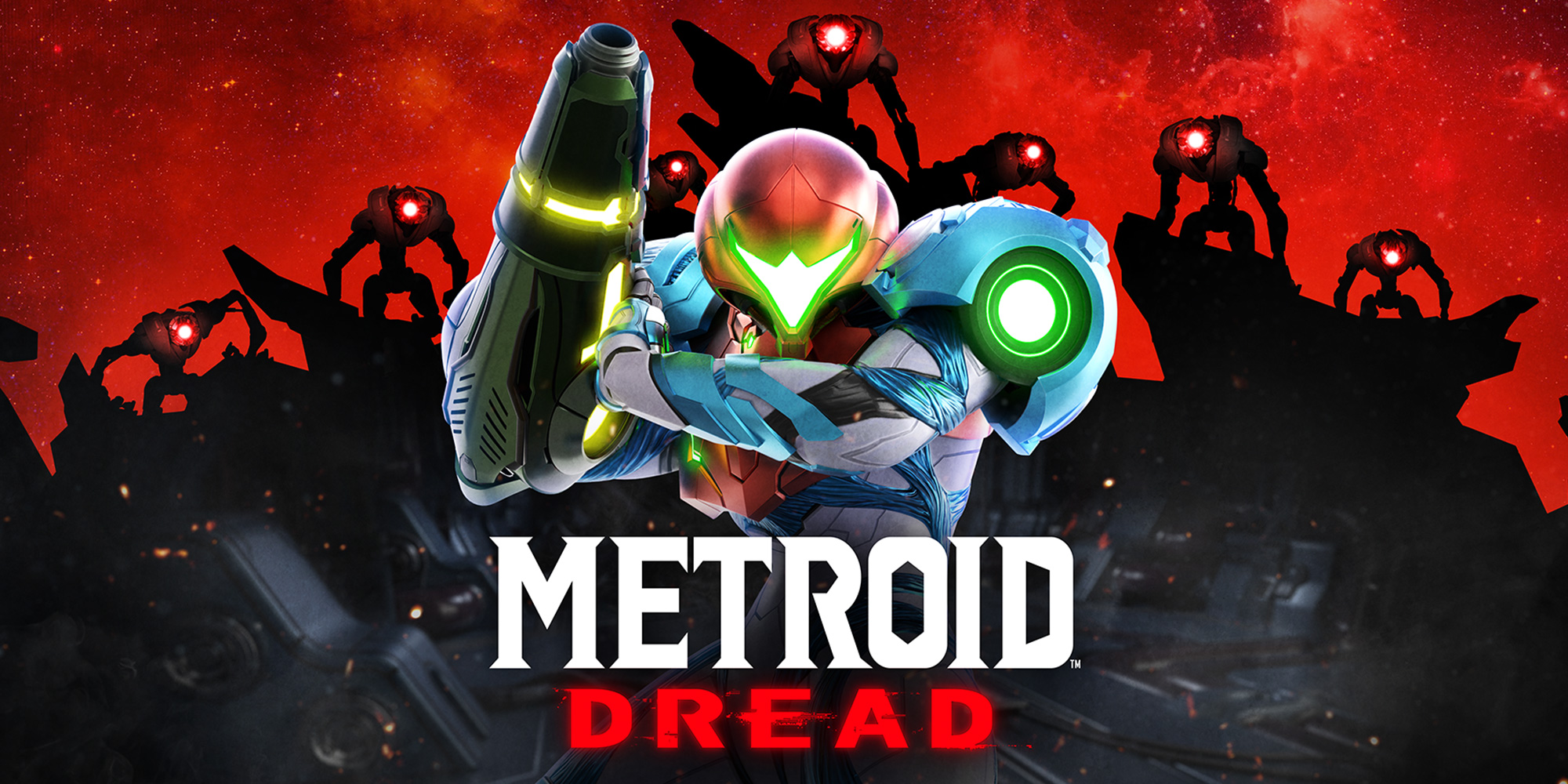
Admittedly, I have not played nearly enough Metroid games. I do have some faint recollection of pouring hours into Metroid SNES about 25 years or so, but honestly that's about it. Besides using her in Super Smash Bros. for the N64, I am very unfamiliar with Samus and why she rose to being the almost cult figure and the prrotagonist of a game with as many interations as there are in the Metroid series. It is for that reason I can't really speak to the series as a whole, but this game is awesome. Returning to it's 2D roots, Metroid Dread is a classic metroidvania but from my rather limited experience with the genre, seems more linear in nature than some others. This isn't particularly a problem with me, as I've found games like these with total openess and freedom often lead to a lot of aimless exploration and some frustrating underleveled moments. There was definitely an open world sort of feel, but higher difficutly content could only be accessed by weapons and upgrades to open certain doors, break certain blocks and so on. The sheer amount of upgrades and abilities that Samus gains throughout this journey is borderline overwhelming, and in her final form you feel incredibly agile and powerful. The game employed the classic mechanic of constantly revising previous areas with newfound abilities which allowed further exploration. There were numerous enemies infesting every area, but at it's core the game really became sort of a boss rush, as them along with EMMI Zones presented the real challenge and the real meat of the game. The combat mechanics themselves were smoothe with a lot of variety and I do feel like playing on the Pro Controller as opposed to Joycons would have definitely been the play considering how difficult the fights get. The bosses attacks were pattern based and could all be dodged with some level of practice as this game really leaned heavily on quick pattern recogniztion and subsequent quick evasion mechanics. There were some serious difficutly spikes throughout, culminating in quite a difficult final boss fight which was like a fairer version of an old school Megaman final boss. The story was pretty typical for a Nintendo story, serviceable but nothing too groundbreaking as all the resources were seemingly put into the core game play experience. Playing through this has me very tempted to do somewhat of a catalogue playthrough of the Metroid series if any of them can even hold a candle to this one, which I expect they can. Also, the speedruns I watched of this game post completion were visually incredible, which I've decided usually predicts a game that I'm going to enjoy.
Platform: SWITCH
Difficulty: NORMAL
Rating: 8.5/10
7. The Adventures of Pip

A mini break for the challenge through the first quarter of the year sees a charming platformer, The Adventures of Pip, getting us back on track. This is a charming, retro, 16 bit platformer where it's resolution is actually one of the core gameplay mechanics. The story itself is a bit forgetabble, tapping into the atpyical 'random normal kid is tasked to tap into his inner hero to save the world'. There is a princess, a recurring antagonist as a final boss and so on and so forth. The aforementioned mechanics, however, is where the Adventures of Pip really gets it's shine. The game has us cycling through Pip's three forms in a way that allows us to get through obstacles, enemies and progress us to the next checkpoint. The 'forms' themselves are various degrees of pixelation, in the sense that Pip's first form 8 bit, second form is 16 bit and the final form is 32 bit. Each form has it's ups and downs, with the 32 bit form allowing us to wield a sword, for example, but the 8 bit form allowing us to jump much higher and squeeze into smaller spaces. Levels will often have us changing form mid jump in order to pass an obstacle which only the new form is able to pass. Pretty cool. The bosses employ these mechanics as well and are a bit of trial and error in terms of figuring out what to do, and depsite difficutly spikes throughout the bosses nor the levels themselves are overly demanding or brutal. The soundtrack was ok that I had it on, but this game became more of a relaxing platformer where I would grind through the levels and worlds while playing YouTube videos - which may sound like a bad thing but it definitely isn't. One thing that could have used some clarity was the upgrade system - I found myself having thousands of dollars at the end without ever realizing I could go into town and buy a bunch of stuff. Perhaps the game should force you to buy a certain item needed for progression to teach and reinforce this system. Overall, a cute, fun and relatively short platformer worthy of a solid 7.
Platform: PS5
Difficulty: NORMAL
Rating: 7/10
8. Destiny: Lightfall

This one kinda breaks my heart. Coming off last years incredible Witch Queen expansion, which scored a record breaking 11 on that year's challenge, we get the playable but incredibly disappointing Lightfall expansion. It should be noted, before my perhaps rather scathing critique, that this review is talking about the expansion's campaign itself, and not the general, persistent Destiny world of many years. On that note, some of the changes made to the state of Destiny have been the best, including a simplified build crafting system, many quality of life changes, and overall aggressive added difficulty to nearly every activity in the game. The campaign itself, though, was a serious let down. It starts off hot, with a cut scene right out of a big budget Star Wars seen which shows Calus' fleet accompagnied by the Witness confronting the Traveler. It's a high action, well directed scene which had me all in for the first few minutes of gameplay. But that's when everything started going downhill. The story of this Lightfall campaign is said to be the same team that put together the incredible Witch Queen, but that just can't be the taste. It was confusing, comfounding and terrible dialogue which didn't at all fit with the overall tone of the franchise. At the heart of this debacle is an NPC named Nimbus, our main NPC for this expansion, and can only be attributed to some sort of attempt at Bungie going woke after outsourcing their creative to some zoomer PR firm. Destiny has long been an inclusive game, with every sort of gender and orientation being celebrated, but inserting this non-binary NPC seems so forced in the wake of the woke world and it just doesn't work. Every time I have to interact with Nimbus I feel almost physically ill, as 'it' has the most annoying voice perhaps ever recorded for a video game. It's a shame too, because the female voice actress has done two of the voices for prominent characters in Hades, one of the greatest voice acted games ever. The story ends with more questions than answers and feels like this was just another seasonal update turned into a full expansion. The gameplay itself is solid Destiny FPS, naturally, but this campaign makes the same mistake as Beyond Light, forcing us to use the new, unoptimized subclass for critical moments without having any build surrounding it. This made the Legendary campaign with it's new found difficutly especially frustrating at times, where our trusted Void or Solar subclasses would have made a section infinitely more approachable than the forced Strand option. As one of Bungie's and Destiny's biggest shills, the campaign hurt but not all is lost. As mentioned, the state of Destiny feels improved overall. I don't necessarily love the soft nerfing of hardcore build crafting, but it does making builds way more accessible and the ability to hot swap entire builds in game is one of the most QOL improvements ever implemented. It's Destiny so I could go on and on, but I think I'll leave it at that. I will continue to play this game into the grave and can only hope the future seasons and expansions can learn from this one's failures.
Platform: PC
Difficulty: N/A
Rating: 6.5/10
9. Dungeon Core
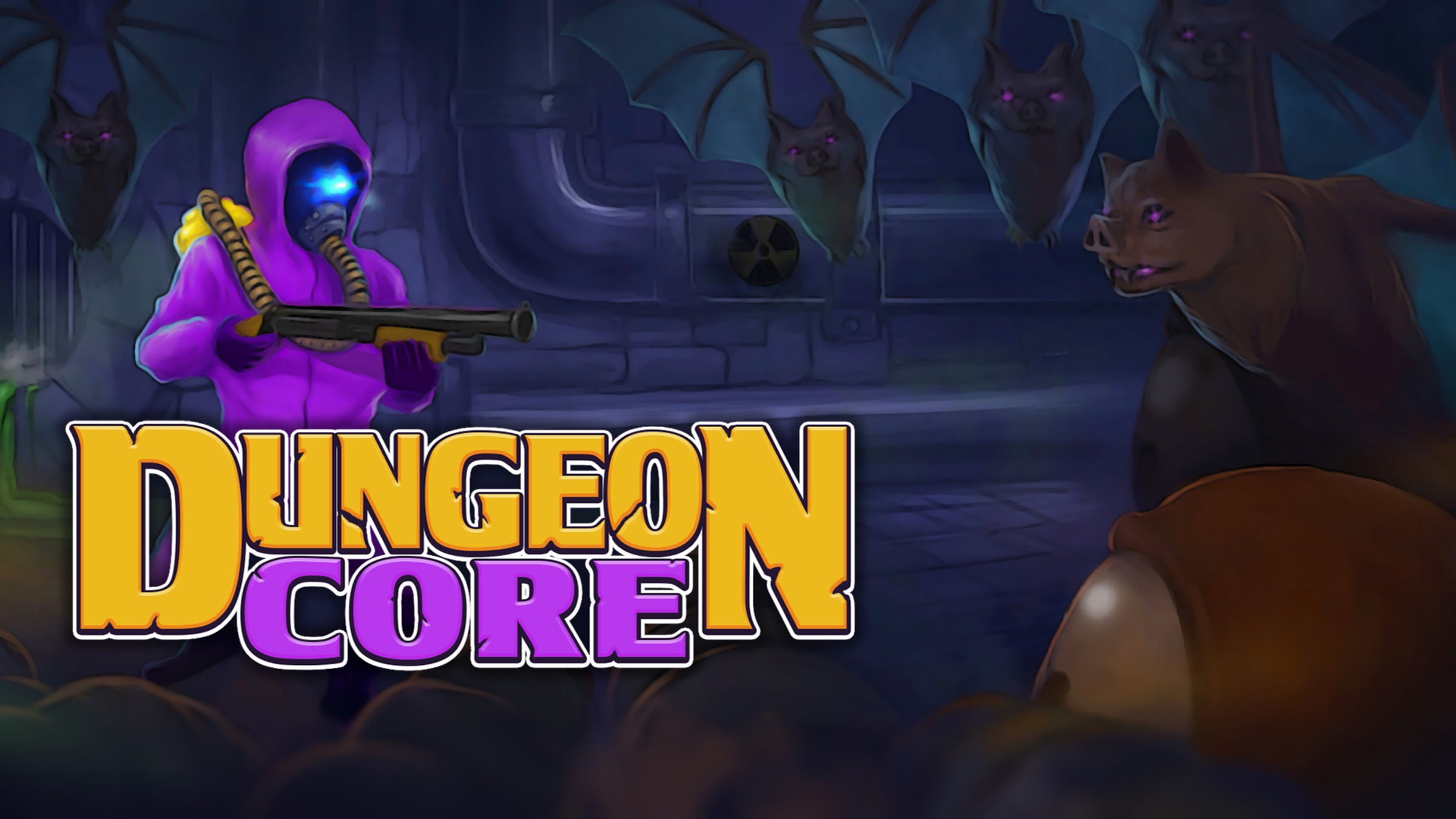
I'm not sure if this game truly deserves a 7.5 if we're being totally honest, but it temporarily scratched by insatiable itch for more Enter the Gungeon, so it does. Speaking of GOAT roguelike (lite?), Dungeon Core feels like kind of a fan project inspired from Enter the Gungeon. The art style, vibe, and core gameplay mechanics seem almost identical, although it does have notable differences. Much like Gungeon, our character starts off in a sort of 'upgrade tower' with variously priced items and upgrades to make subsequent runs easier. After purchasing some upgrades with the retained currency from the last run, the player enters the Core which, much like Gungeon, are a series of levels split up into three sections, each with final bosses and progressive difficulty. Although this game employes the typical chests, keys and shop system, there is a unique aspect to this roguelite with emphasis placed on upgrading your guns as opposed to constantly finding and using new ones. Guns also have infinite ammo, which although makes the game a helluva lot easier, does feel like a nice change from constantly having to worry about ammo. Meta progression is a bit weird, as the currency tied to upgrading is given from destroying terminals in almost every room which immediately spawns more enemies and makes that particular room much more difficult. If we're being honest I'm not sure how I feel about this mechanic, but my strategy was to bust every console in the early levels and then try to not destroy them if I had a good run going. I say good run going as if this game took more than five runs to beat, but it didn't. I'm not sure if it's some skill carrying over from Gungeon, but this roguelite felt incredibly easy. When I fully upgraded a simple auto rifle, I felt almost invincible and one shotted the both final bosses with almost zero difficulty. In that sense, this game does lack a bit of replayability and grind, but I'm not mad at it for the purposes of this challenge.
Platform: PC
Difficulty: N/A
Rating: 7.5/10
10. Blasphemous
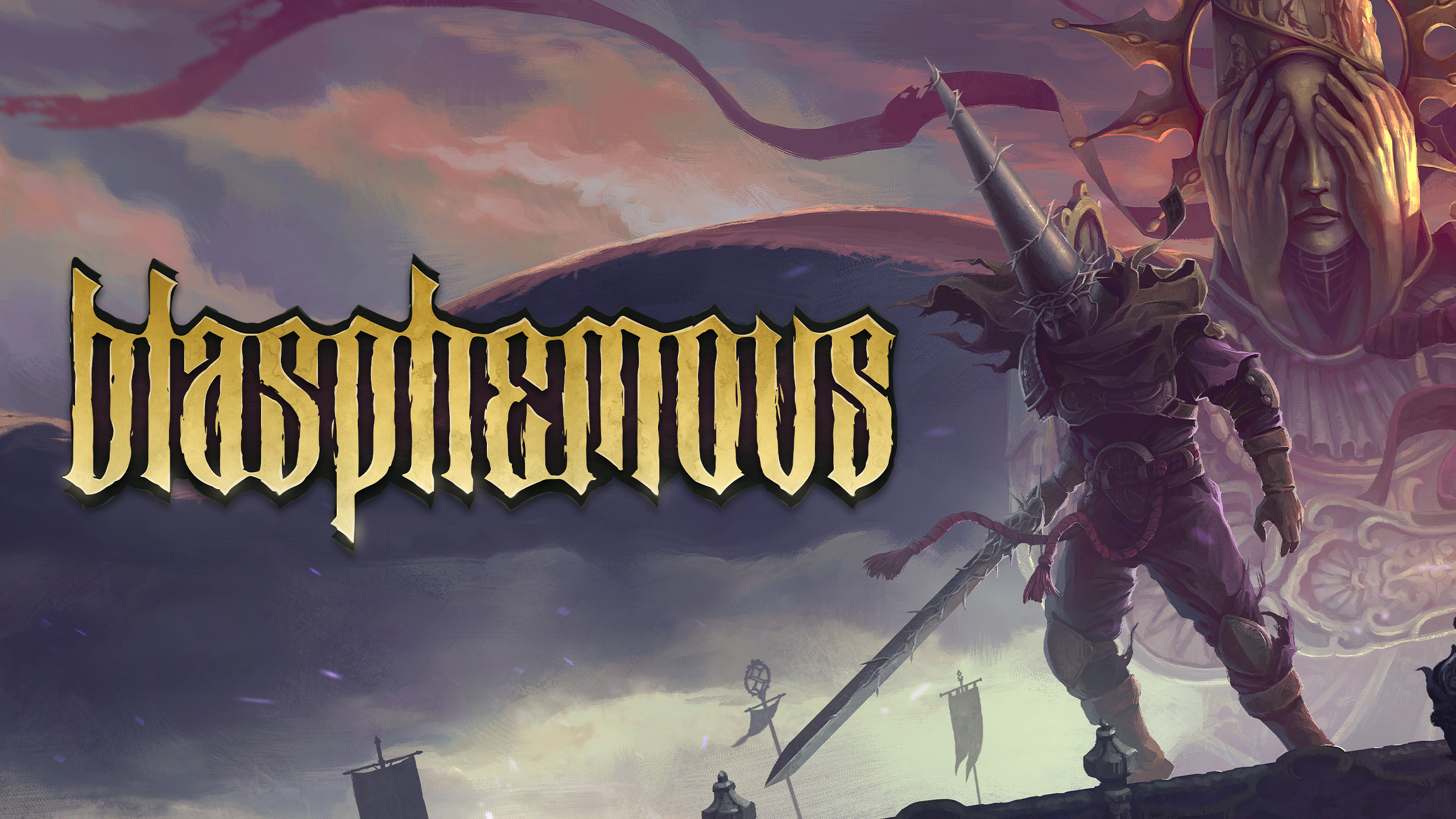
Oh penitent one. A phrase that has been in my head for the past two weeks ago after conquering this masterpiece. I do say masterpiece slightly facetiously, this is a game with many flaws. But in similar logic to the 7.5 awarded to Dungeon Core, this is a personal list and the scores are deeply reflective of my personal gaming preferences. Blasphemous is a 2D side scrolling Metroidvania set in a dystopian, highly religious world. Although the plot is spoken in tongues and highly confusing, what I took from it is that this world is some sort of parralel universe to ours where instead of Jesus sacrificing himself relieved our sins, we were instead punished. The result is a gorgeous yet horrific pixelated purgatory with some of the most terrifying and mind bending level and enemy design that I've ever seen. The gameplay and combat mechanics themselves are serviceable - not quite reaching the level of a Hollow Knight or Dead Cells in terms of the fluidity and control, but solid nonetheless and it works for this game. The difficutly is fairly high but forgiving with a very fair amount of checkpoints per section and bosses which have predictable patterns that can eventually be mastered. I loved exploring and making my way through this game so much that I almost gave it a 10. However, there is one, slightly major, design flaw which resulted in a point penalty. I penalized this game because so much content is hidden behind unlocking certain and doing certain things which are almost impossible to find out without a guide. For example, I noticed there were grappling hook-like devices around the map in most areas which was clearly something I could interact with later. However, when the credits rolled I realized I hadn't grapped a single time durinig my entire playthrough. It turns out that in order to grapple around the map and explore much of it's content, you needed to receive a special egg after gifting three items to an NPC, and then you would take the egg and plant it in a random tree in a random level and that would somehow give you the grappling ability. I don't mind that the 'true' ending has a set of ridiculous requirementns that you would never find out by yourself, perhaps similar to Undretale, but to block such an essential movement item such as a grappling hook behind similar circumstances felt a bit ridiculous. All this aside, Blasphemous is an early contender for game of the year 2023 - I just wish I got to see a little more of it. Blasphemous 2 is coming out some time in the near future and I'll be diving into it upon release.
Platform: PC
Difficulty: N/A
Rating: 9/10
11. Blazing Chrome
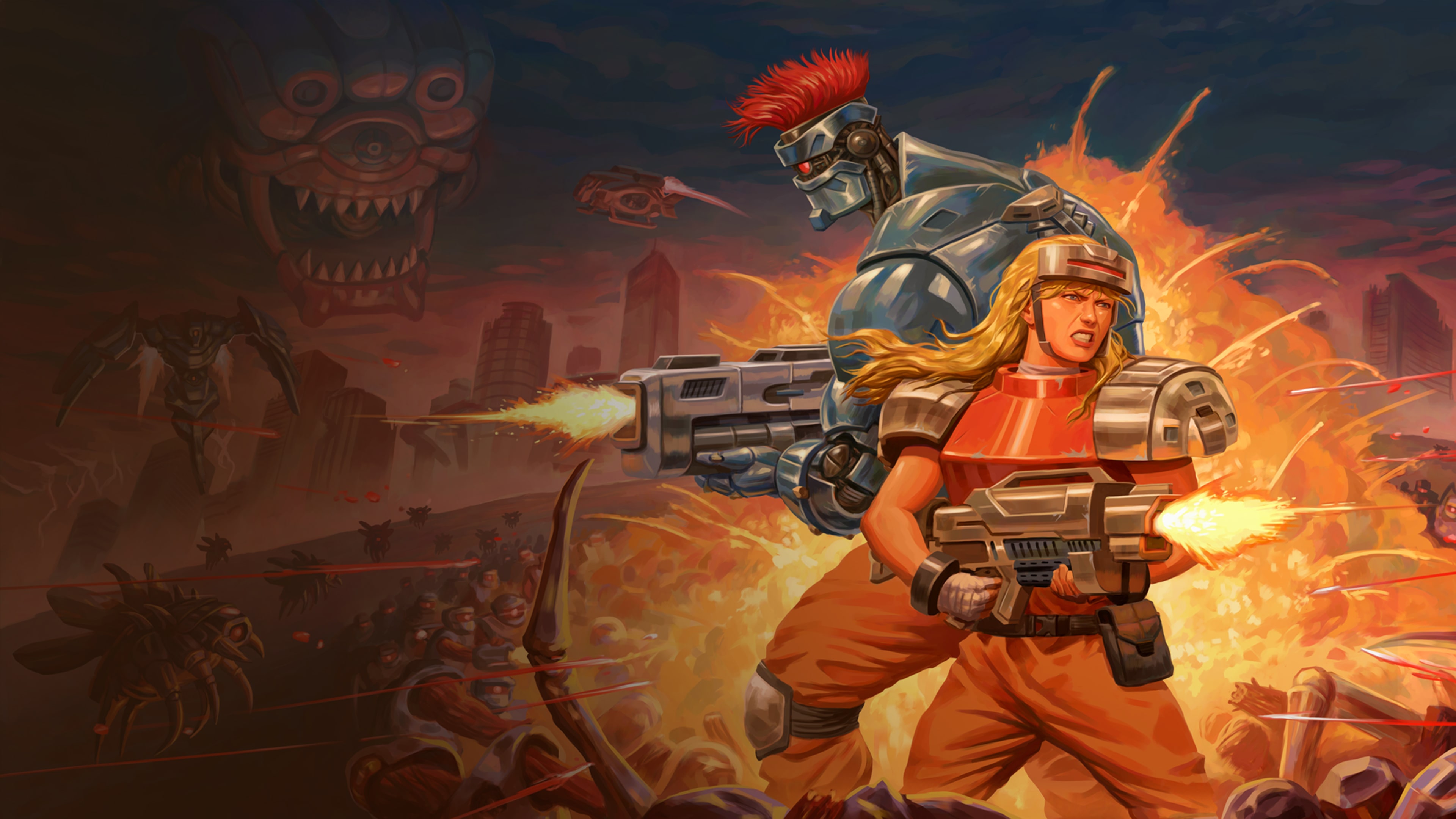
Well, I've never actually played through Contra, but apparently this was a very similar experience, at least according to the Steam reviews. Blazing Chrome is a 2D, sidescrolling arcade shooter which serves as a sort of a love letter to the aforementioned Contra series. The game is relatively short, I think culminating in 6 or 7 levels with multtiple stages as the team of protagnoists attempt to resecure the world for robot and alien forces. Similar to games like Metal Slug, however, the story is a distant after thought as the focus tends to be on the core run and gun gameplay. Another similarity to a game like Contra is the alleged difficutly. I say alleged because I've, again, never played Contra, but the difficutly for Blazing Chrome was here in spades. The game employed a one hit kill mechanic, resulting in losing a life if damage is taken from any source. This resulted in a progression system where you had about five lives to make it to a next checkpoint before starting at that point to learn and conquer subsequent sections. Attack, defense and speed bots along with an array of weapons could be picked up along the journey to assist in the rather difficult content ahead. The boss fights were again, difficult, but learnable and after understanding their set patterns, quite easy to beat. Special attention was made to the last boss encounter which had us in a multi staged, multi dimensional fight which was much longer than all previous bosses and required extra effort to learn the patterns and make it through the bulk of the fight unscathed. Although this genre has never been my absolute favorite in the world of gaming, it is enjoyable nonetheless and always good for a quick and entertaining playthrough.
Platform: PC
Difficulty: NORMAL
Rating: 7/10
12. Spelunky 2

Is this really the years first perfect score? The elusive 10? Yes, yes it is and well deserved at that. Spelunky 2 is a true roguelike where the only thing you'll retain upon many, many, many deaths is information. A very similar game to the first one, Spelunky 2 has us venturing down the depths of a distant planet, uncovering layer after layer before reaching it's 'core'. The game has two fundamental items that can be infinitely acquired and prove invaluable in any run - ropes and bombs. These items allow us to traverse the unforgiving terrain in a more forgiving manner and prove essentail to the core gameplay loop. Like any good roguelike, there are additional items such as a parachute, a shotgun and a jetpack which can be bought in shops or found in a variety of places during a run. This is probably one of the most difficult games I've ever played in my life. Starting with four lives, and although they can be farmed, death comes swiftly and brutally as the number of one hit kill mechanics the game has almost makes said lives meaningless. What makes this game truely special, unironically, is it's depth. Although beating a normal run to see the credits can be achieved through relatively conventional and intuitive gameplay, the amount of mysteries and secrets and hidden bosses and hidden endings that this game has to offer is magical albeit slightly ridiculous. Despite it's high base difficulty, this game offers probably the most difficult built in gaming challenge in the history of gaming, the 7-99 challenge which requires mastering this game beyond comprehension. Although I don't think I'll ever see the end of 7-99, the uncovering the aforementioned secrets comes in the form of filling out your 'Bestiary', with 100% completion something that I plan to pick away at as Spelunky 2 is the quintessential mobile game to have on the Switch. This beautiful, unforgiving, and sometimes downright unfair gameplay loop is something that I will be continuing to enjoy for the forseeable future. If Spelunky 3 comes out, it is a game that I will be playing day 1 and discovering it's mysteries with the rest of the community.
Platform: SWITCH
Difficulty: N/A
Rating: 10/10
13. Ageless

I really wanted to like this game. And I should of. It had all the ingredients for success. Undoubtedly a Celeste clone, this was a precision platformer in the style of one screen puzzles. The jumping and overall movement wasn't quite as fluid as Celeste, but that's not where this game lost so many points. Like Celeste, it tells a somewhat of a cryptic story of a young girl finding her way through life, with somewhat melancholic undertones. While not as polished as the aforementioned classic, the pixel art is beautiful and the character sprites are perfectly fit in this animated world. The unique mechanic of this game is really cool. Our protagonist is allowed to control her surroundings in Benjamin Buttonesque manner as she can age or consequently reverse age the interactable objects in the environment around her. A flower can be turned from a sprout to a tree, a fish can be turned from a minnow to a dolphin, and so on and so forth. Using this mechanic in the correct way is the central component in advancing from room to room. Again, this all sounds kinda amazing, so why the 5.5? Honestly, it's in the execution. While playing this game I couldn't help but be reminded of one of my favorite YouTube playthroughs of all time - the legendary Kaizo Mario God Dode playing through a very infamous puzzle hack. The difficulty was absurd, and the puzzles were so poorly and oddly designed that looking for an item abusive cheese was often the better solution. This felt the same here, albeit at a much smaller and easier scale. The mechanic which had so much potential often fell flat, as the solution to some of the one screen puzzles was so bizarre that there was barely a feeling of accomplishment when moving on to the next challenge. This all game to a brutal head near the end of the game where I was absolutely positive I had the solution to a screen, but it simply wasn't working. As it turned out, I was right. I did manage to cheese the level, but watching a YouTube playthrough after I completed the game showed me I had the right solution the whole time and it was simply not working. That's borderline unforgivable a game and you're going to see a bad score. This somewhat balanced out, in a bad way, with the final, epic puzzle of the game that I managed to circumvent by an obvious cheese and at long last the credits rolled. I wasn't going to drop this game below 5 because it had so many positive elements, they simply just did not come together.
Platform: PC
Difficulty: N/A
Rating: 5.5/10
14. Pinstripe
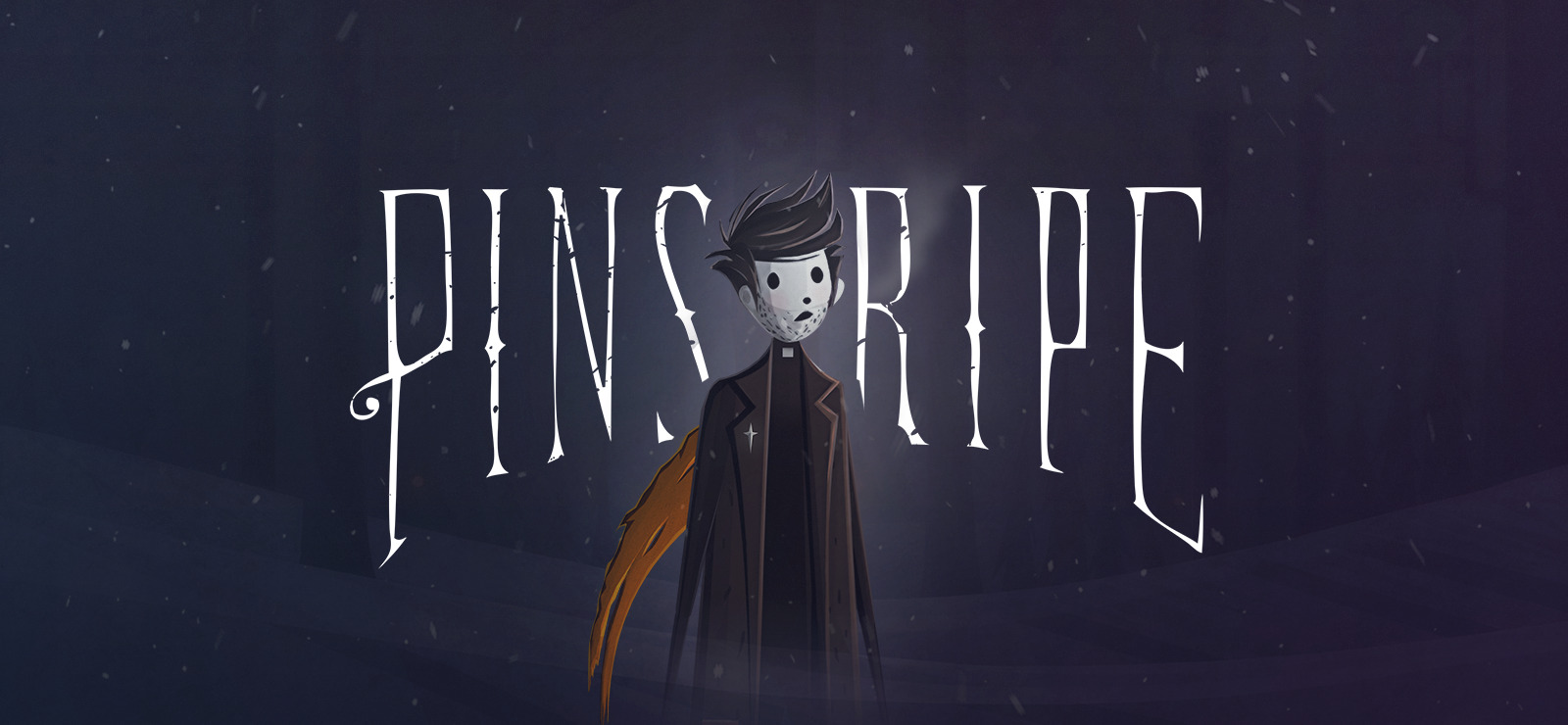
Unlike the previous game whose ambition far surpassed it's delivery, Pinstripe was the opposite. Developed by a single developer, I believe, Pinstripe set out to do what it intended perfectly. The game is probably best described as a puzzle platformer with a higher emphasis on the puzzling rather than the platforming. The platforming itself was as simple as it gets, with a few jumps and arrow shots here and there but it was mostly used as a way to interact and solve the puzzles to progress through the story. Speaking of story, this is where this game really shined. You start off as a father and daughter on a mysterious train, and it beomes clear rather quickly that this train serves as some type of metaphor for death and the next destination for the soul. Piece by piece, it's revealed this is the tragic story of a father who drunk drove he and his daughter to their death, fueled from the pain of losing his wife to an apparent fatal disease. Every interactable object which is used to solve puzzles are hints at this story, ranging from a bottle of whiskey to prescription pills. The artwork is unique and beautiful, not pixelated but occupying moreso a cartoon style. The playthrough is short, sweet and incredibly impactful. Kudos to this one man team, I'll undoutedly be looking for more of his creations.
Platform: PC
Difficulty: N/A
Rating: 8/10
15. Castlevania

Ah, the very first of an epic series - the OG Castlevania for the NES. Admittedly, this a series I've barely touched but one that I eventually want to conquer. My only other real experience with Castlevania is the one for the SNES which I beat before I started gamingwithdan.com and a game that I will likely revisit to add to a challenge. It is likely that retro and Castlevania purists alike would be furious with a genre creating classic such as Castlevania, but, let's be honest...the game is a bit rough. The movement mechanics are brutal, the art is ugly, the enemies AI is annoying, the difficulty is supreme. I don't think I need to go into what Castlevania is as everyone knows - a 2D platformer going through sequential levels until a final confrontation with Dracula. Instead, I will focus on the reason I would have otherwise likely given this game an 8.5 or 9. And that is the fifth stage boss fight against the Reaper. This is one of the dumbest, most unfair fights I have ever come across in all my years of gaming. The Reaper throws out countless spinning scythes which track towards the player while Death swings to and fro in an unpredictable manner. The combination of the terrible movement mechanics and the limited screen to work with makes this an impossibly brutal fight. There is no trial and error, only trial as the only way to conquer this fight invovles an incredible amount of luck, bereft of skill. While looking up other gamers experience with this fight, I accidentally found a cheese. Apparently throwing holy water at the boss at the very beginning of the fight would freeze it in place, turning this fight from one of the toughest to one of the easiest. I was so frustrated that I couldn't help but test and employ this strategy, which resulted in me beating it instantly. This, however, is not satisfying. Funnily enough, the corridor before the boss is one of the most infamous and gaming and also one I had down to an absolute science after all of my miserable attempts to beat it. This is likely because gamers knew the holy water cheese but there was no such cheese for the corridor leading up to it, which did in fact rely on some solid patterm recognition and platforming skill. In any event, I recognize the genre defining role that the original Castlevania has so I'll show it respect by giving it a respectable score. Ironically, the final fight with Dracula was incredibly easy in comparison which to me just reeks of bad design. For 1986 though, it is what it is. I'll be rotating another Castlevania into the mix shortly and see how this series has progressed.
Platform: PS5
Difficulty: N/A
Rating: 7/10
16. Crash Bandicoot
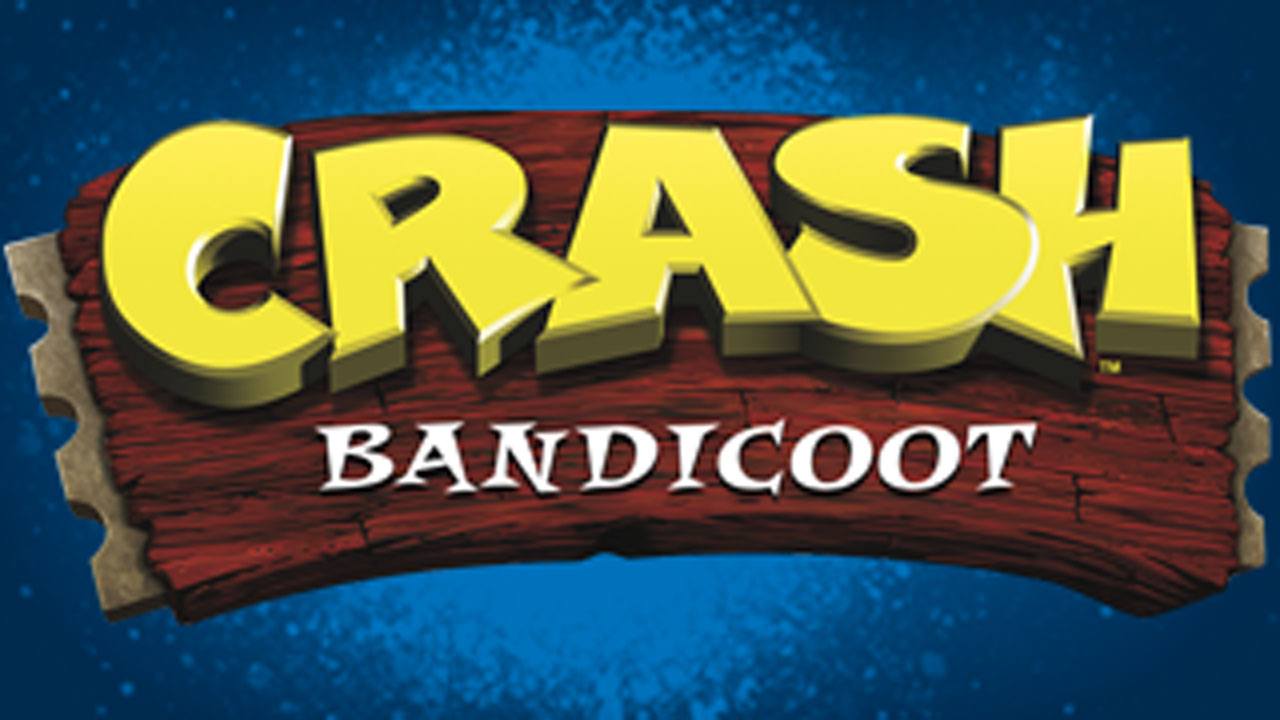
Unlike the previous entry, I feel like this game not only deserves the general respect it gets for being a classic in the genre but it also, and arguably more importanatly, deserves a highscore from gamingwithdan.com. In full disclosure, I was a Nintendo kid. So much so, I found playstation exclusives to almost be the enemy and never touched this title or any other title in my youth besides Parrapa the Rapper. Sufficive to say, at 35, this was my first full playthrough of Crash Bandicoot. And I enjoyed pretty much every minute of it. As perhaps a counter to the insanely innovative Super Mario 64 and the Donkey Kong Series, Crash Bandicoot combined 2D and 3D platforming to deliver an incredibly entertaining yet demanding experience that involved incredibly precise inputs. The story, artwork, and music were nothing to write home about it, but the game shined where it was supposed to - charm and precision platforming. It shared a very similar structure to the aforementioned DK series, as the progression structure was an overworld with a series of sections that each had a number of individual levels. The game had a fairly steady difficulty progression, with a few spikes, particularly the 'Road to Nowhere' level which is apparently infamous in Bandicoot culture. I will admit, after years of platforming and buildling up the Kaizo section of this website, this classic did not feel overly difficuilt to me and was able to be beat in a handful of sessions without much stress. I have the whole series along with the brand new fourth game that was recently released, and I will likely play through them all this calendar year.
Platform: PS5
Difficulty: N/A
Rating: 8.5/10
17. Bleed

This is a game I've had my eye on for a while, and was pleased to take the, albeit short, dive into this stylistic, acrobatic action platformer. The plot is a bit confusing - our female protagnoist traverses through seven levels and kills their final bosses in a quest to become some sort of supreme hero. However, when she conquers said task, another person takes the credit and the people revolt on the person that takes the credit so then our protagonist kills that person and then the people love her. Yah, something like that. Forget the plot, it suffices, where this game shine is the acrobatic twin stick movement and the beautiful pixel art that surrounds it. The controls at first are a bit odd - simply moving the right joystick around sprays an infinite amount of bullets in the pointed direction. This is coupled with the two triggers being bound to jumping and slowing down time - the latter being a unique mechanic that this game offers to make the bullet hell much more manageable. We are given three total jumps, which in combination with bullet time, allows for very precise and sleak movement tech that clearly presents a very high skill ceiling I'm sure some gamers have obtained. The boss fights were incredibly artistic, creative, and on the Hard difficulty presented a real challenge. The key to success was pattern memorization along with strategic use of the bullet time meter. As mentioned, this is a short lived, but incredibly pleasant and memorable experience. Bleed 2 is also in the PSN library, and I will be adding which I can only imagine will be a short and magnificent experience to the 2023 challenge.
Platform: PS5
Difficulty: HARD
Rating: 8/10
18. Blasphemous 2

Like some mythical creature that is the legend of folk lore, an 11 has risen from the ashes and spread it's wings. There has been, to my knowledge, only one 11 ever handed out in gamingwithdan history and it appropriately went to The Witch Queen, an expansion from my favorite game of all time. Destiny of course is a live service game so this will be the official first 11 handed out for a more linear, one time experience type of video game. And boy does it deserve it. The first Blasphemous was one of my favorite playthroughs over year, having only been topped by the stellar Spelunky 2. Blasphemous 2 doesn't deviate from this successful formula, but instead improves on what I already considered a game of near perfection. The lore, the story, the pixel art, the combat, the grotesque yet intriguing NPCs - it's all there in folds as they haven't broken that which didn't need fixing. What has been added is a min/maxxing RPG element that allows you to build craft The Penitent One into more specific play styles. The player chooses one of three swords at the beginning, and although they can all be later acquired, I didn't deviate at all from one I picked as I laid almost all my skill points into it. Stat boosting figurines can be arranged in the menu which boosts various stats and have interesting combination which garner further added bonuses. The movement is slicker than the first and once fully upgraded it is pure joy to have The Penitent One fly through this incredibly designed world. The story, like the first, is cryptic and shrouded in Catholic symbolism but the gist of it remains the same as the first game - the Penitent One is on some holy quest to defeat the grievous miracle and those behind it that have cursed the world that we reside in. If I had a complaint, and I don't really, is that the game could use a little more difficulty. It could be the fact that I've sunk many hours into the first game and thus had more of a feel for the platforming action, but every boss getting beat in three tries or less on a hardcore platformer didn't feel quite right. Again, the key to success was enemy pattern recognition coupled with quick and nimble fingers. The easy difficulty, however, is somewhat rectified with the rather stiffening learning curve that is the second to last boss. This was a legitimitely difficult boss fight for any hardcore platformer and beating him gave that real feeling of accomplishment that was sorely lacking for most of the game. The music and the aforementioned pixel art are absolutely breathtaking and only add to the incredible universe that these devs have created. Unfortunately, the true ending of this game saw The Penitent One completely is penance which dampens my hopes for another entry into this incredible series. Regardless, I know these devs can't be done in general having made this masterpiece and will check out anything they roll out.
Platform: PC
Difficulty: N/A
Rating: 11/10
19. Puzzle Agent
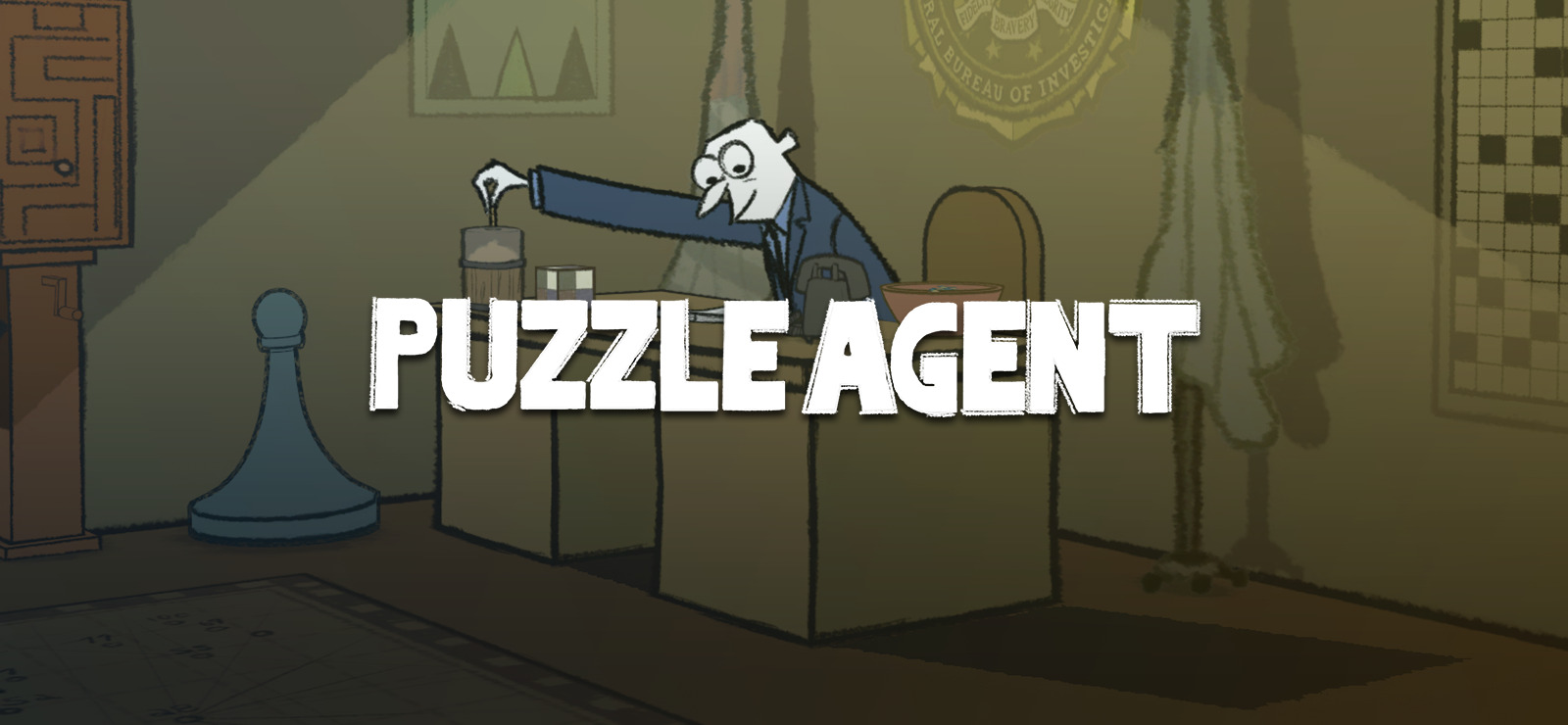
Despite the score, this was a fun, quirky, point and click'ish adventure game that sees Agent Tether (I think?) solve a murder mystery involving a pencil factory in a cold, isolated town. I say point and click'ish because although you point and click your way through the story it doesn't operate as the typical Lucas Arts or Sierra title as the core gameplay mechanic is solving, as the name would suggest, 'puzzles' along the way. The puzzles themselves I think were a missed opportunity from the game and perhaps reflects the rather modest 6.5 score. Don't get me wrong, there are some decent head scratchers which require some real thinking but there are way too many that fall short in a game which should have really taken the time to make every puzzle is damn near perfect. The other aspects of the game, however, were pretty on point. The story was unique, quirky, relatively funny and straight forward. The artwork seemed hand drawn and suited it's environment perfectly. Despite enjoying this game but not loving it, I will absolutely be going through Puzzle Agent 2, as it's a laptop game which suits the purposes of this challenge perfectly.
Platform: PC
Difficulty: N/A
Rating: 6.5/10
20. The Messenger

This was a game that started looking like a 10, dipped as low as a 6, and settled back to a respectable 8 when all said was done. This 2D action platformer with a twist of Metroidvania is brought to us by a development team out of Quebec, Canada who have made it their mission to deliver modern day retro classics. This game, at least on the surface, has everything I love about gaming. Fluid 2D ninja combat with swift movement mechanics in a beautifully contruscted pixelated world. The Messenger is the story of a young ninja who travels through time to undo an endless loop of sufferring that was started from the hands of the Demon King which serves as one of the game's final bosses. The first half of the game goes along as expected as a linear 2D action platformer before reaching what appeared to be the final boss. I thought this legimitely was the end of the game, but it only serves as a halfway point as the twist of the game all of a sudden turns this into a Metroidvania with much more content. This is where the game started to dip for me, not because of the extra content, but because the backtracking became back breaking as going through an entire area just to get to another area for the 5th time highlighted the horrible fast track system that the game had implemented. Although there was a puzzle element in terms of what to do and where to go next, you could buy hints from the shopkeeper NPC which I did every time without fail to avoid further endless back tracking. There are a bevvy of combat and movement upgrades which occur mostly during the first half of the game which further adds to the rather boring and dry second half. The game, however, does pick up near the end as new areas are discovered and this was able to bring this score back up to a respectable 8.5. The music in this game needs to be mentioned as the retro tunes are all beautiful and add to an otherwise, overall very enjoyable experience. One of the coolest parts of this game is that it's universe is shared by Sea of Stars, a game which I will be starting soon and one where I have good reason to believe it will end up with one of the year's highest scores. I'm excited to see all the tie ins and easter eggs which in my opinion is a genious move from the dev team. I believe this game and Sea of Stars are the only games thus far from this Canadian gaming team, but I will definitely check out anything they produce.
Platform: PC
Difficulty: N/A
Rating: 8/10
21. Hue

One of my favorite puzzle platformers I've ever played. Hue could be described as somewhat of a mix between games like Limbo and Ageless, being far superior to the latter but maybe even the former. Much like Limbo, you control a black and white minimalistic hand drawn character but here you play a boy searching for his mother in the strange world you are dropped in. Along your journey, the mother has left notes for the boy which are read when picked up and can be best described as the Hue world building component. The unique puzzle mechanic in this game is a color wheel which you control with the right joystick. You use this color wheel to manipulate corresponding colors and the world around you in an incredibly creative and unique ways. The devs absolutely stretched the application of this mechanic to the limit and I applaud them for it. Although this was the main focus of the game, raw platforming itself was still present and a lot of puzzles would involve precise timing between jumping and selecting or deselectinig the correct color on the color wheel. Clearing a fairly cryptic puzzle room offered a tremendous sense of accomplishment which is exactly what these types of games are supposed to do. A solid, albeit a surprising, 8.5 and a very pleasent, enjoyable and short experience.
Platform: PC
Difficulty: N/A
Rating: 8.5/10
22. Angry Video Game Nerd Adventures
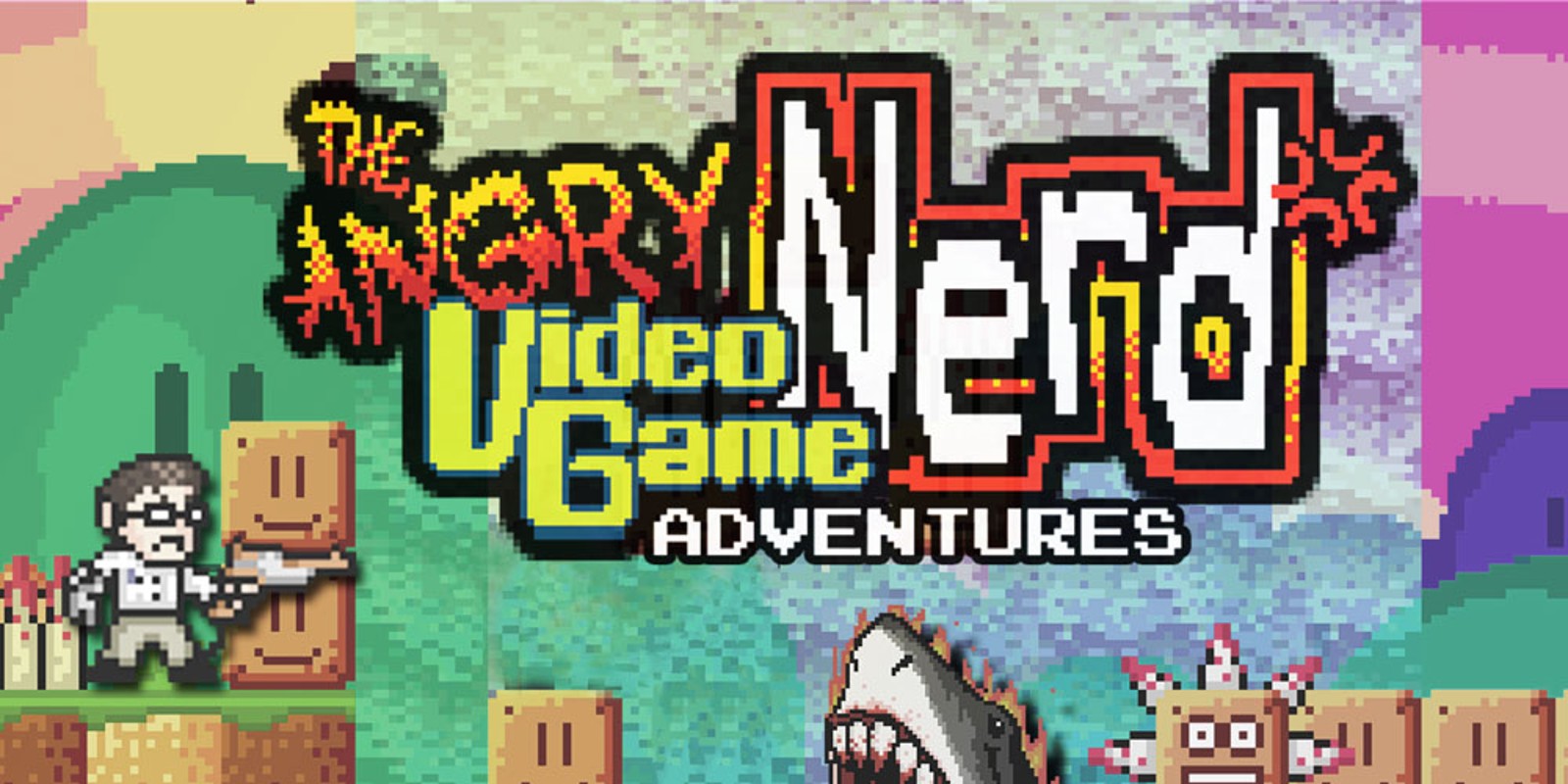
This was a fun and trickly little experience. AVGNA I think is considered somewhat of a cult classic, and serves as a very short satirical homage to brutal precision platformers. You play as the 'Angry Video Game Nerd' himself, who I believe is some sort of Twitch or Youtube community figure known for his angry rants against bad video games. The game only consits of eight or so stages, and on the difficulty I chose you have around 20 lives to complete a stage before getting your progress wiped. This system was fine, but there was a pretty serious design flaw where it was advantageous to drain your lives to 0 before attempting a new stage which was just a bit of a silly oversight. The bosses, and namely the last one, were very difficult and required intense pattern memorization and quick reflexes. There wasn't too much in the ways of powerups and gameplay mechanics, with the core gameplay mainly consisting of running, jumping and shooting. This was a decent game and it certainly served it's purpose, and also has the honour of being the first game beaten on my newly acquired Steam deck.
Platform: PC
Difficulty: NORMAL
Rating: 6/10





















